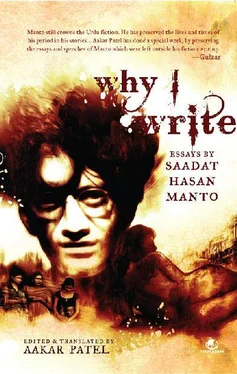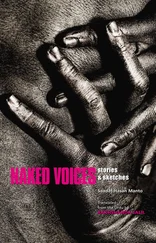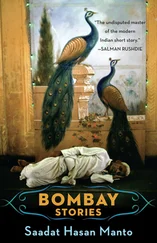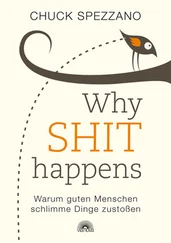The film begins with a scene at Ratan Lal’s house. The rent hasn’t been paid. Hearing his landlord’s voice, and fearing a confrontation, the terrified hero slips out of his house unnoticed.
Through the film we see that the hero and heroine keep running scared, even from those who are not enemies. Why would anyone want to chase them? And why do they hide all the time? Why are they alarmed by every sound?
Mr Abbas and Mr Jamil might be able to answer this in their way. I have my own explanation.
These two characters are not the people they should have been. Let me explain. Ms Heroine has been thrown out by her husband. She pines for love and male companionship. What does she do? Attach herself to the first available man she meets. We see the expression of her love on screen, and that’s how it should be, because she is hungry for it. Hungry for physical love. She doesn’t particularly care to know — for she doesn’t even ask him — who or what Ratan Lal is. She just jumps straight into his lap because he’s a man.
She is bold enough to sleep in a room with him, but not bold enough to own up to this. And I couldn’t figure out why they kept crying all the time instead of doing something about it. Surely she was bold enough to have seen the thing through?
And why abuse society? When Ms Heroine is considering spending the night in Ratan Lal’s company, society doesn’t knock on the door and tear them apart. Nobody objects to their wandering about openly in the streets either.
Whatever Khwaja Abbas might say, the fact is that the two of them are aching to be in bed, but they also want that the society shouldn’t have a problem with that.
This story was just about the two of them. They could have done as they wished, and what difference would it have made to society? Would it have brought Armageddon? If not, what was the point of this film? It has no bearing on reality, no relation to society. It is merely the story of one couple’s inability to have sex. That’s it. Why make it out to be something else?
The film calls itself Zindagi , or life. Life is not about a man and a woman. Life is about action. Life is a struggle. Life is about staying alive. This loser of a hero, who has an MA and who sings like an angel, could have earned thousands of rupees a month if he had chosen to work instead of whining. He knew how to perform magic, but he’s shown winning only a counterfeit, two anna coin and wandering about the streets. I regret that it was
Ms Heroine who was killed off in the end by the script. I wish Ratan Lal had gone instead, a useless man. He loves her but curses the society.
Had I been the society, I would have slapped the fool so hard he wouldn’t have had the courage to stay an unemployed vagabond.
And another thing I didn’t understand. When her father thinks she has done this great thing, he makes over all his wealth to Ms Heroine. She promptly begins to give it all away to charity. As an act this is fine, but what aspect of her character was driving her to do this? Was she doing it to get into heaven? It’s all a mystery.
Khwaja Abbas says those who go to watch Zindagi should carry two handkerchiefs with them. I agree.
One to wipe your tears, the other to wipe Barua’s!
— (Originally published as Zindagi — Isi Naam
Ke Ek Film Par Review)
What would Manto have made of Bollywood? I don’t think he would have been surprised by the fact that it remained in Mumbai (he would be amused by the city’s renaming). He understood quickly and instinctively that this was the only place in the subcontinent that was both civilized and liberal to support an industry that could only blossom on the cusp of immorality. Manto would perhaps have been disappointed and pleased at today’s Bollywood. Disappointed because the higher aspects of what he expected from the business never materialized except in what we know as art or alternative cinema. He would have been pleased because film has been the most effective medium for spreading ideas, more than print. In this essay, he sets ideals for the industry he worked in and loved, and had to let go when he later moved to Lahore.
In 1913, Mr D G Phalke made India’s first film. He thus began the art of filmmaking in the subcontinent. It was his dream to bring cinema to India and the dream was realized when he sold his wife’s jewels to raise money.
However, the dream that the progressive youth of India have seen has still not come to fruition. There is but one reason for this: the people in charge of moviemaking here are old-fashioned and simple-minded. They have neither the desire nor the intention to progress. No art can come out of this lot, whose lives are like still waters.
India’s youth, whom I am representing, who want to explore every aspect of life, who want to soar in flight despite having their wings clipped, aren’t satisfied with the state of filmmaking.
They are witless children, yes, ignorant of the ways of the world, true, and vagabonds, perhaps. But the desire in their hearts, the eagerness on their faces is worth something. It should make the fat-walleted businessmen, who control the Indian Motion Picture Congress, ashamed.
But in fact these young Indians are thought to be sick. And indeed they are. They are infected with love for their country. They want to mount the chariot of the State and see India delivered to its destiny, where other great nations already stand. They are willing to die for this.
They don’t have the clinking coins of the businessmen but they flash a more valuable asset: the crimson sparkle of their blood. This is madness, but it should be respected. India needs it.
We want good films. We want great films, such as we can put up against the work from other nations. We want every aspect of India to shine. This desire burns in us and we cannot separate it from our being.
Before its revolution, Russia was in a worse state than India. There were no sign of either literature nor poetry. But in a short burst of genius, Russia produced her Wali, her Mir and her Ghalib. And so it is also with her films. Russia has produced directors of such greatness that they will remain a source of pride for all humanity.
But for the last twenty-five years, made of 9,125 days, what have we got to show? Can we put on display our directors? What about our writers, who exist by ripping off the writings of others? Can we show our movies — all of them copies of American films — to others?
No.
India should make Indian films. We don’t at the moment. Take our social films, made by the dozen today. Are they really Indian in their sensibilities? No. You hardly see any “Indianess” in them; often characters dressed in western clothes to appear American and the reverse, a western actor wearing dhoti-kurta. These absurdities are called social films, just as our actors refer to themselves as ”artists”.
Art has not been defined in India. The Lord alone knows what it is thought to be. Art is a paint-filled tub into which everyone dips their clothes. But this isn’t really art and such people aren’t artists. The other word bandied about is “masterpiece”. If everyone in the studio, from the director to the fellow who hammers nails into the set, is an artist, it is also a fact that every Indian movie from Raja Harishchandra to Sitara is a masterpiece. Because of this, art has lost its value and masterpieces have depreciated. Here are my observations on our movies and what is needed to improve our cinema.
Films and Producers: analysis and criticism of India’s filmmaking is published regularly. But the press doesn’t really help here. This is because the film press is focussed on its business, which is to make money. And the advertising in such magazines is mainly from producers. We have many papers and magazines but no real journalism. This will change when we become less barbaric as a nation, and this in turn will come only after the populace is finally exposed to the thinking of intellectuals.
Читать дальше












